The Original Renault 5 Is an Overlooked People’s Hero
It’s no secret that the Renault R5 Turbo is one hot collectible, with prices for good condition examples approaching the six-figure mark. If you’ve driven one, you know why: As Sam Smith wrote, “If it were a child, it would be one of those five-year-olds who runs laps of the living room at max q and tries to light your couch on fire.” Sounds fun! But while this broad-hipped and even more broadly deranged little turbocharged Renault is a highly pressurized delight, give a thought to the overlooked car upon which it is based. How much French élan can you get for less than a tenth of the price of an R5 Turbo? A lot, it turns out.
Renault’s R5 is back in headlines these days, thanks to the recently released EV of the same name. Not available this side of the Atlantic, the new car still looks like it would make a decent rental for your next Euro trip: 148 hp, 249 miles of range, priced like a well-equipped Honda Civic. That last characteristic shows that the new battery-powered R5 cleaves to the mission statement of the original, intended to be an inexpensive yet youthful supermini. If the 2CV was the people’s car for peasants who needed to ferry around baskets of eggs, the Renault 5 was what Pierre and Eloise bought when you couldn’t keep them down at le farm.
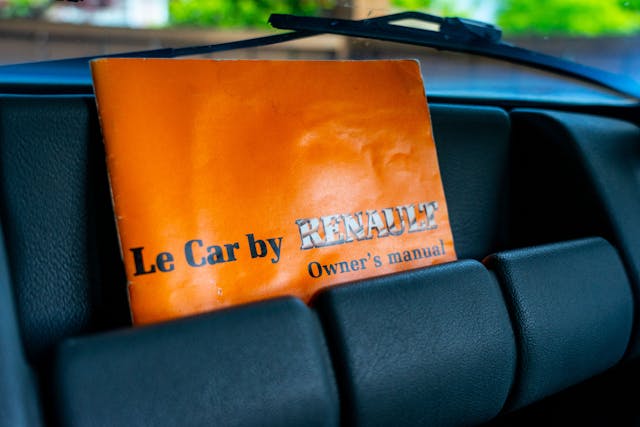
The original idea was to prove that cheap and chic weren’t mutually exclusive concepts. In the 1960s, Renault was building the 4L, its riposte to Citroën’s 2CV. The 4L was very simple and very successful (over 8 million produced) and was about as attractive as a toaster in a sundress. By 1967, the forward-looking Bernard Hanon, Renault’s head of planning, had convinced CEO Pierre Dreyfuss to add a small car with youth appeal to the R&D budget.
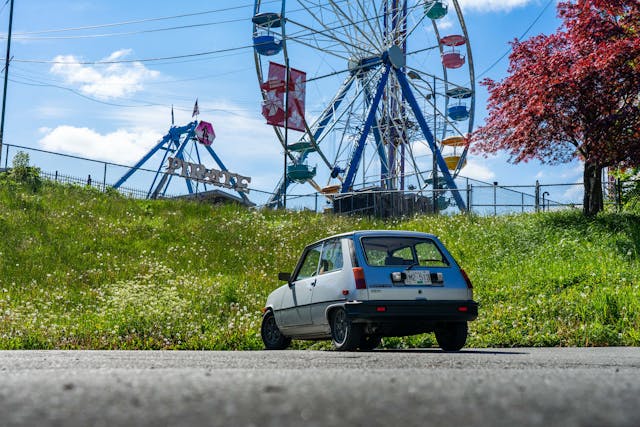
Enter the tragic story of the Renault 5’s designer. Stylist Michel Boué, working in his own spare time, overlaid a Renault 4 with a transparent sheet of paper and sketched out a deceptively simple two-box, three-door hatchback. When the Renault brass saw the thought experiment, they immediately moved to develop it into a full project, leaving Boué’s original idea almost completely intact.
Boué would die of cancer in 1972, far too soon to see how his design would change the face of French motoring.
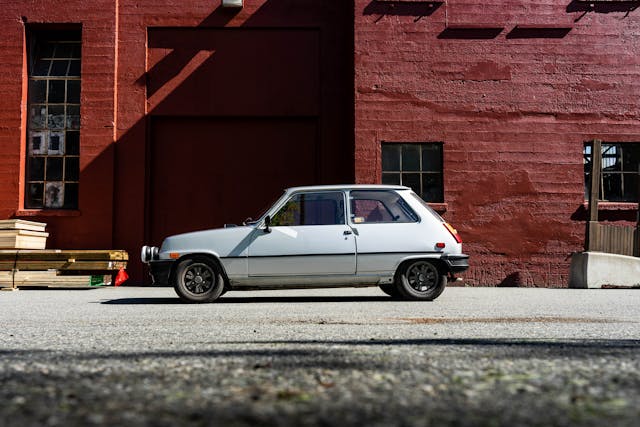
To a North American eye, the 5 doesn’t look all that revolutionary. It’s a tiny boxy European shoebox built to thread through along narrow, cobblestoned roads of medieval towns, the sort of vehicle you might see everywhere in the backdrop of some 1980s National Geographic special on cathedrals or monasteries or a cheese that’s produced by monks who live in a monastery next to a cathedral.
But the 5 wasn’t a 1980s design; it was a product of the very early 1970s. That’s how forward-thinking it was. The car was revealed in December of 1971 and went on sale in January of the very next year. Its square, cheery looks and airy cabin made it a smash hit. The look of the future, available today for less than 10,000 Francs (about $2000)! As Renault hoped for, the 5 sold strongly among a more youthful buying audience, effectively recreating the 1960s magic of the BMC Mini for a new decade.
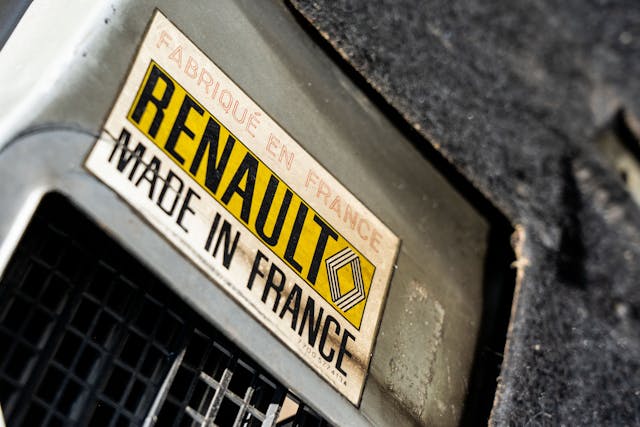
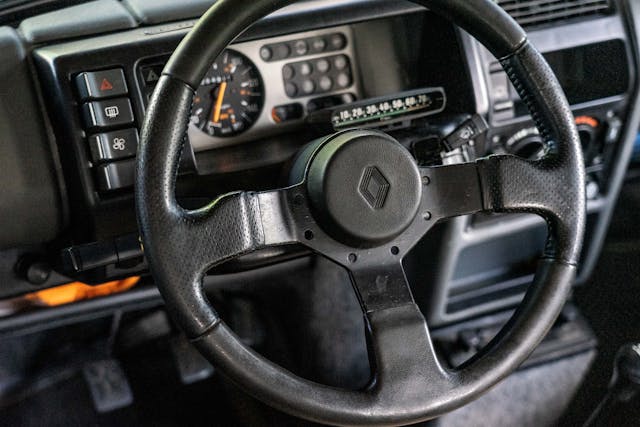
Even the pessimism that hit with the first of the global fuel crises one year after the launch of the 5 couldn’t break its stride. If anything, that stride lengthened; Renault quickly developed a slightly detuned model that could achieve over 50 mpg with a cautious driver behind the wheel, the mid-40s with a Parisian one. Though thrifty, the 5 was stylish enough to transcend class, and you could use its wraparound bumpers to force your way into a parallel parking spot like you were driving a motorized sardine. The 5 was the best-selling car in France, and soon the best-selling car in Europe. There was only one more Western market to conquer.
Watching the success of the Volkswagen Golf and the Honda Civic in the U.S. must have been incredibly frustrating for Renault. After all, the manufacturer of the most popular car in Europe should surely have been able to match or even exceed the success of these other foreign makes. But Renault’s tiny dealer network was insufficient to the task, and when the 5 was introduced in 1976, sales numbers stayed low. Clearly, some clever marketing was required.
Perhaps not all that clever. Noting that “Renault 5” meant little to U.S. buyers not familiar with the Renault brand, the company changed the name of the 5 to “Le Car.” It was both a simplification and a state of fact: the 5 was the best-selling car in France from its introduction in 1972 all the way until 1984. It was, quite literally, the default French car of its time. Calling it a generic “car” wasn’t a stretch at all. Sales doubled with the name change in 1977.
Eventually, thanks to some rapid, jet-setting action by a Renault executive named François Dubin, Renault entered into a partnership with AMC. The tie-up would eventually lead to the Renault/AMC Alliance, a sedan usually remembered with some derision that actually met with initial success. Based on the Renault R9, the Alliance exchanged Gallic charm for mass appeal. Since Renault figured it had finally hit on the right car for the U.S. market, the 5 disappeared from U.S. showrooms in 1983, hanging on in Canada until 1985.
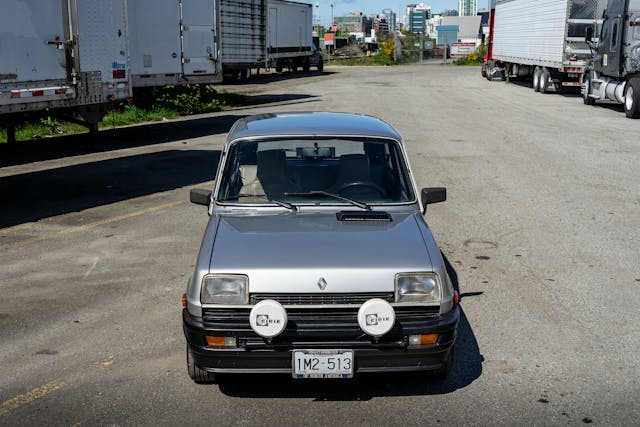
This example is one of the last Le Cars sold in North America, if not in fact the last. It’s registered as a 1986 model, a French refugee that gathered dust in a Canadian AMC showroom before being finally registered for the road. Yet even in its rarity, it’s not a collectible as much as a really interesting car.
When you pore over the details, it’s impossible to miss how clever French engineering is when compared to that from the rest of the world. Instead of a door handle, this car has a little flap molded into the sheetmetal. Only a single, non-gas strut supports the rear hatch. The headliner is stamped with the repeating diamond pattern of the Renault badge—not primarily because of branding, but because it provides actual structural support to the slightly flimsy, stamped roof. Everything about this little city car is slightly ethereal, as impossibly airy and light as a properly cooked soufflé.
The driving experience of this delicate little confection only really emerges when you flog the car like the first mate might a Napoleonic-era sailor who just spilled raspberry compote on the captain’s best white pantaloons. But of course that’s how the 5 behaves—it’s French. Allons-y!
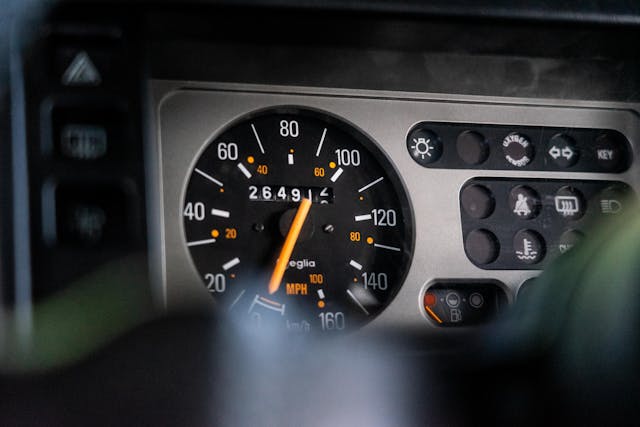
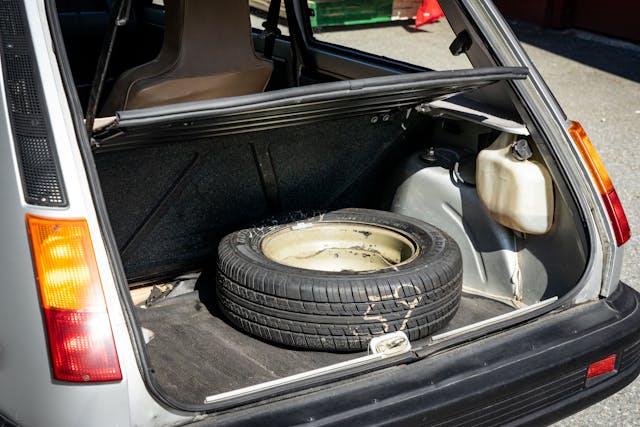
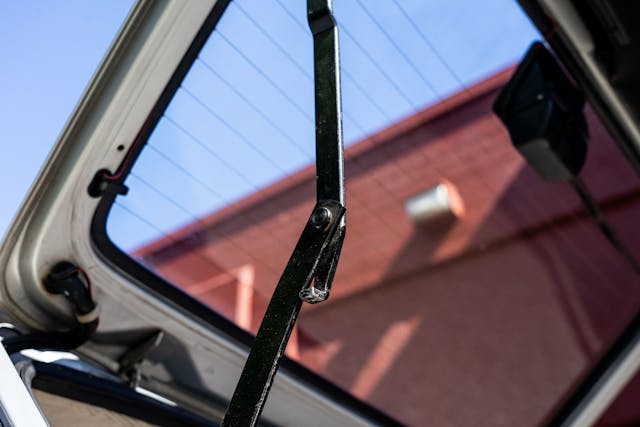
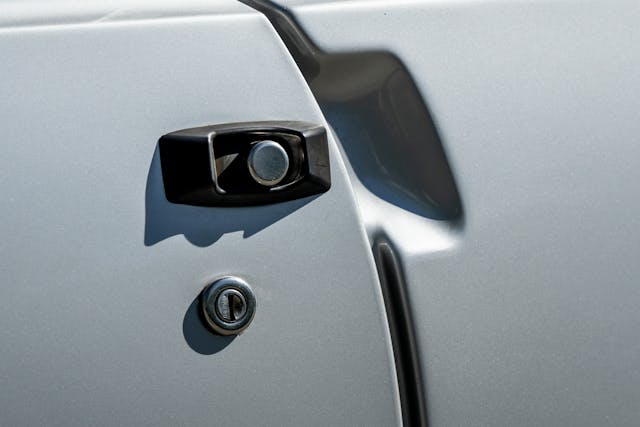
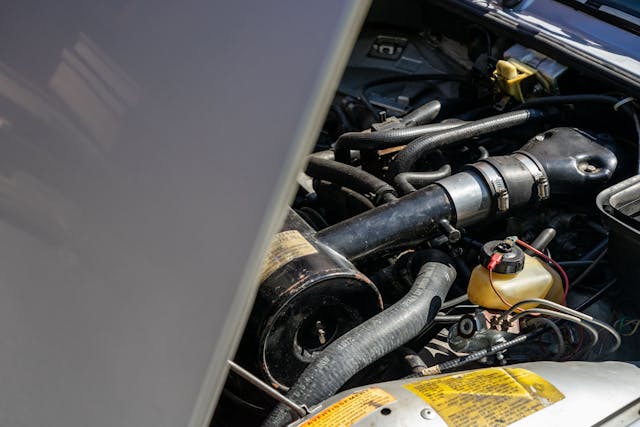

This car is nearly forty years old, and its 1.3-liter, four-cylinder engine produces just shy of 60 hp. Even this late in production, the underpinnings are still basically those of the homely 4L, with its wacky torsion-bar independent suspension that results in a slightly longer right wheelbase and roly-poly handling. Nevertheless, the 5 is wonderfully exhilarating to wring to its limits. It’s as titchy as Asterisk from the Goscinny and Uderzo comics, but likewise loves a punchup, zipping through traffic with glee.
It is hardly what you’d call fast, and yet at the same time is quicker than you’d expect. In 1977, Renault entered Le Cars in SCCA Class C Showroom Stock racing as a way to promote the brand, and the little French hatchbacks clocked up 57 podiums in 52 races.
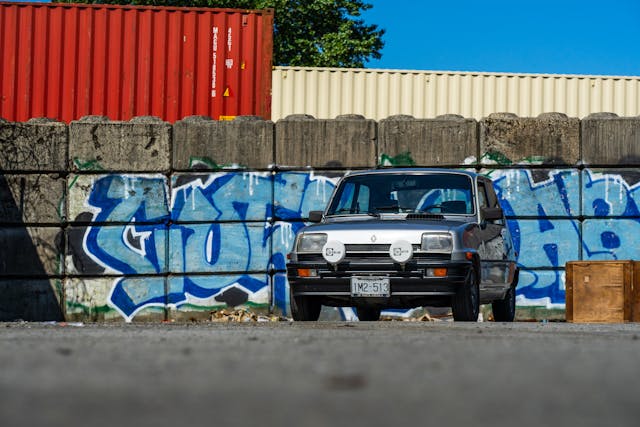
The best comparison here is lunch, or rather déjeuner. A modern compact car is like fast food burger and fries, order up quick and back to the office or job site to get on with things. Travel in a Renault 5 is like a meal with an old friend with whom you don’t always see eye to eye: it takes forever, there’s all kinds of yelling and frantic gesturing, and you come away from the experience feeling refreshed and fulfilled. And also probably late for work. Ah well. C’est la vie.
Yes, you could pay 90 grand for a French murder hatch with hips like a Pixar mom and a fondness for high-speed ditch exploration. But the original city car upon which it is based has a goofy joie de vivre that is beyond price. You don’t need deep pockets to get into one, you merely need patience, and the ability to snap up a decent example when you stumble across it.

To drive one is to experience the essence of what it meant to be a French motorist in a time when each country’s small cars still came with outsize and individual personalities. An acquired taste, perhaps, like doubling the garlic the recipe calls for. But one you’ll never forget.
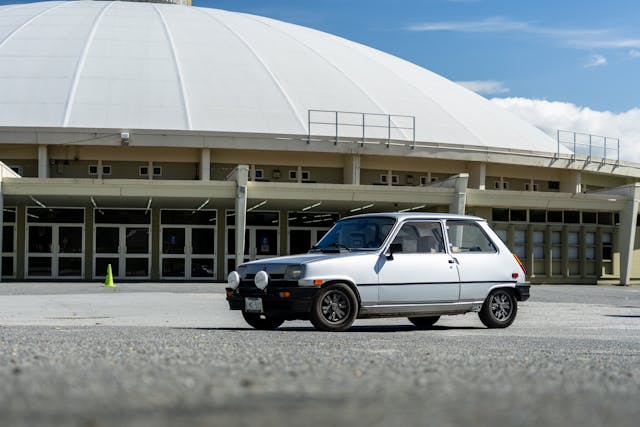
***
Check out the Hagerty Media homepage so you don’t miss a single story, or better yet, bookmark it. To get our best stories delivered right to your inbox, subscribe to our newsletters.



Renault LeCar is like the old saying goes if you think you hate it now just wait till you drive it.
The LeCar still gives me flashbacks like a Vet from a foreign war. These things were not much more than a go cart. We had one as a regular customer and it was not all that old but it was just rotted out. It seldom ran well but it did run.
The 3 lug wheels were a first for me. Even Fiat had 4.
We had a variety of cars in and I rank the LeCar right with the Yugo and Lada. These were very low cost disposable cars.
Renault never really sent a car to this country that did much for their reputation pre Nissan hook up. At least Peugeot had a solid diesel and their cars while rare did hold up a bit better. My neighbors grandfather had one and he bought it for the engine and it ran for ever.
To be honest It may be my Viking heritage as I am directly descended from The Norman King Rollo the Walking. I never was much for French cars or food. Nice country but I will leave it at that.
I do admire the French Murder Hatch as it was referred to but just never had much drive or call for French cars in general.
I bought a 1983 R5 from a Vermont coworker in the early ’90s to be a winter beater for $25, which was what a junkyard had offered him for it. He drove the R5 halfway to my house where I took possession. I spent around $1,250 on parts to fix it up: Exhaust system, snow tires, brakes, etc, but no engine or suspension work was needed. The body was impressively solid for a Vermont car. There was a local (AMC/Jeep?) dealer at that time in West Lebanon NH, whose parts department diligently ordered all of the dealer-only parts that I needed. In particular, the unique rubber isolated exhaust hangers which failed regularly within the parts warranty period, so that they were always replaced under warranty.
That R5 was my winter daily driver and summer commuter for 2 years and never let me down. Yes, many exhaust hangers were replaced by me. Yes, the carburetor needed adjustments every 2 weeks, No the heater couldn’t overcome the draft from the roll back canvas sunroof. However, I was young and at that that time, I had a personal interstate cruising speed of 80 mph and except for uphill grades, the R5 delivered. Even for an hours-long drive to Washington DC.
Driving in slush one afternoon , I skidded off the road and the big plastic front bumper took out an ornamental tree in a front yard. There was no damage to the car, but my insurance paid to replace the tree.
The end finally came when the car skidded into a snowbank on a snow covered dirt road at night and it flipped on its side. Another passing driver helped me tip the Renault back on its wheels (2 people!) and I drove several miles to find a lighted parking lot where I could verify that the battery was still in place and check the engine oil. All good, and I continued home. The windshield was cracked on the edge and there was road rash in the driver’s side paint, but no other broken glass.
I continued to drive the R5 until I found a replacement vehicle. I sold the car for $150 and the buyer drove it away. The R5 turned out to be a tough and reliable little car!
One I worked on used to come in with the rockers totally rotted away and it was not all that old.
But we had a winter beater Fiat. It was from TX so no rust and it held up for a number of years and abuse too. But a pile of snow that was frozen broke the welds to the front end and it would flex after that when on the gas and off. I think we all had some beaters like this.
I love this story. This is the quintessential story about the love of the automobile.
Hi cousin !
My wife and I used to go to MidOhio to watch the races
One of my favorites was an
All LeCar series
Imagine about forty of these dicing for position and taking turns on three wheels….
Mon Dieu!!!!!
Cold War Motors on YouTube- just painted his black Reh-nawlt (as it was market to N.America and I still call them that).
People too young to know don’t realize that most of the imports brought over in the late 50’s quickly developed a reputation- a poor one. Renault and Fiat included. That hangover was still around- and why buy an unreliable French car when good Japanese cars were available.
At the time the Le Car was introduced, I thought “who would buy one of those?”.
Love that channel, Scott and all his friends always pitch in for whoever needs a hand.
I saw a yellow R5 at an autocross back in the 70s. It was so softly sprung that it rolled over on it’s side.
If it rode anything like an R16 it must have had a great ride quality though.
I remember as a kid in the early 80’s was about when these cars just disappeared in Chicagoland. I used to see a few but Chicago salt killed these things quickly.
My first new car was an ‘82 LeCar leftover in 1983. Referred to as The LeCar, it sounded uncomfortably redundant. The first week that I owned it, I used a hair dryer to remove the LeCar decals. The only modification I ever performed.
I owned the R 5 for three years. I put 45k mlles on it. They were trouble free miles. I sold it to a friend, who insisted on buying it. He forked over two thousand dollars for it in cash. It was a good thing because within two months, the car fell apart. He wanted his money back. I told him no dice. That was it for the friendship.
By the way, the R 5 in your article must be the last drivable one in North America.
A company in Springfield, MA converted the cars to electric using a forklift motor. called the “Lectric Leopard”. I worked at an AMC dealer as a Service Manager that had them and also bought most of the original engines. Thank heavens I was too tall to have one of these as my company car! More than a few had a name change to “LeMon”. They were awful cars. However, there was a turbo version that did quite well on the local autocross tracks.
My father bought a 1969 R10 after returning from Vietnam. Good price. Four door and extremely comfortable leather seats. The FRUNK was a cool feature. Put your foot to the floor and the engine purred at 85mph all day. It was a reliable 40mpg car until I drove through the pacific surf on the beach in Washington State. Then it quickly rusted. 1976 he bought a AMC Pacer.
I owned 3 LeCars. They were far more comfortable than the rock hard suspension of the Civics and the early cars would run with the VW Rabbits. Later US cars got a 1.4 low compression engine that was much less enthusiastic than the earlier 1.3. between the three of them we drove over 200,000 miles and never had any major problems. In the end, like so many cars of that time, rust was a problem. It’s hard to find one now.